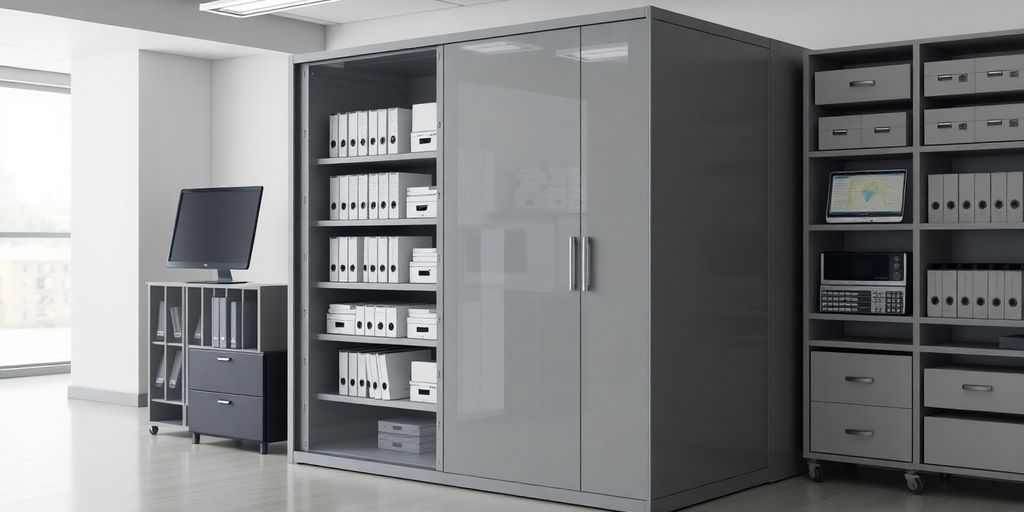In 2024, keeping your digital documents safe is more important than ever. With everything moving online, knowing how to store your files securely is a must. This guide will walk you through the best ways to protect your digital assets, so you can have peace of mind whether you’re at the office or on the go.
Key Takeaways
- Cloud storage lets you access your documents from anywhere, making it perfect for remote work or travel.
- Encryption is vital for keeping sensitive information safe in the cloud.
- Regular backups are essential to prevent data loss and ensure you always have access to your files.
Navigating The Cloud: Your New Best Friend For Secure Document Storage

Why Cloud Storage Is A Game Changer
Alright, picture this: your entire filing cabinet, bursting with papers, now fits neatly into your pocket. That’s the magic of cloud storage. Gone are the days of hunting for that elusive document buried under a mountain of paperwork. With cloud storage, you can access your files anytime, anywhere—whether you’re chilling on a beach or stuck in a meeting that could’ve been an email. It’s like having your own personal assistant who never takes a day off!
Choosing The Right Cloud Provider
Not all clouds are created equal. When picking a cloud provider, think of it like choosing a new phone plan—you want the best bang for your buck. Consider factors like storage capacity, ease of use, and customer support. Oh, and don’t forget about security! A good provider will offer robust security measures to keep your data under lock and key. If you’re feeling overwhelmed, check out our collection of guides for insights into top providers like Google Cloud File System and Microsoft OneDrive.
The Importance Of Encryption
Let’s talk encryption. It’s the digital equivalent of speaking in code with your best friend, ensuring that only the two of you understand the conversation. In the world of cloud storage, encryption is your best defense against prying eyes. Encrypting your files means that even if someone manages to sneak a peek, all they’ll see is gibberish. So, always look for a cloud service that offers end-to-end encryption. It’s like having a secret handshake with your data—only you know the moves.
Transitioning To A Paperless Paradise: Tips For Success

Overcoming The Initial Hurdles
So, you’re thinking of ditching paper? Good on you! But let’s face it, the beginning can be a bit like trying to teach a cat to fetch—awkward and a tad frustrating. First things first, assess your current paper usage. Are your filing cabinets groaning under the weight of ancient receipts and random documents? Start by sorting out what you really need and what’s just taking up space. Digitizing your documents is a great way to start. Use a reliable scanner or even your smartphone to capture those pesky papers. Remember, Rome wasn’t built in a day, and neither is a paperless office.
Creating A Seamless Filing System
Once you’ve got your documents in digital form, it’s time to organize them. Think of your computer’s storage as the ultimate closet—everything should have its place. Create folders that make sense: perhaps by date, project, or client. And for the love of all things organized, name your files properly! A document named "Doc1" is about as helpful as a chocolate teapot. Consider using tags for even easier retrieval. You’ll thank your past self when you’re not tearing your hair out looking for that one elusive file.
Training Your Team For The Digital Age
Convincing everyone else to jump on the paperless bandwagon can be a challenge. It’s like getting your family to agree on a vacation destination—everyone has their own ideas. Start by explaining the benefits: less clutter, easier access, and a step towards saving the trees. Offer training sessions to show how to use new digital tools effectively. Encourage your team to ask questions and provide feedback. After all, a team that’s on the same page (or screen) is a happy team.
Going paperless isn’t just about saving trees—it’s about saving your sanity. Imagine a world where you can find any document with a few clicks. Bliss, right?
With these tips, you’ll be well on your way to creating a streamlined, efficient, and environmentally friendly workspace. Welcome to the future!
Security Protocols: Keeping Your Digital Assets Under Lock And Key
Setting Up Access Permissions
Alright, let’s talk about access permissions. You wouldn’t just hand out the keys to your house to anyone, right? The same goes for your digital assets. Setting up access permissions is like deciding who gets the keys to your virtual kingdom. Here’s what you should do:
- Identify who needs access: Not everyone in your team needs to see every document. Be selective.
- Create user roles: Assign roles based on what each person needs to do. This keeps things organized and secure.
- Regularly review permissions: People change roles, leave jobs, or sometimes just don’t need access anymore. Keep your permissions up to date.
Regular Backups: Your Safety Net
Imagine working on a project for hours and then—poof—it’s gone. Nightmare, right? Regular backups are your safety net against such disasters. Here’s how you can ensure your data is safe:
- Automate your backups: Set it and forget it. Make sure your system automatically backs up data at regular intervals.
- Use multiple backup methods: Don’t just rely on one method. Combine cloud storage with physical backups for extra security.
- Test your backups: It’s not enough to just back up your data. You need to make sure you can actually restore it if needed.
Understanding Two-Factor Authentication
Two-factor authentication (2FA) is like having a bouncer at the door of your digital assets. It adds an extra layer of security, making it harder for unwanted guests to get in. Here’s why you should consider it:
- It’s simple but effective: 2FA usually involves something you know (like a password) and something you have (like your phone).
- Reduces risk of unauthorized access: Even if someone gets your password, they’d still need the second factor to get in.
- Widely supported: Most services offer 2FA, so there’s no excuse not to use it.
Think of your digital assets like a vault. With the right security protocols, you can sleep easy knowing your treasures are well-guarded.
And hey, if you’re looking for a service that prioritizes security, Winning Exchange is one that uses top-notch protocols like TLS and HTTPS to keep your data safe. Just saying!
The Art Of Organization: Mastering Your Digital Filing System
Folder Structures That Work
Alright, let’s dive into the magic of folders. Think of your digital filing system like your closet. You wouldn’t throw your jeans, shirts, and socks into one big pile, would you? Nope, you’d have sections for each. Similarly, your digital documents need a well-thought-out structure. Start by creating broad categories like "Work," "Personal," and "Finance." Then, break these down further. For instance, under "Finance," you might have "Taxes," "Bank Statements," and "Receipts." This way, when tax season rolls around, you’re not scrambling through a digital haystack to find that one receipt from a year ago.
Naming Conventions That Make Sense
Names matter, folks! Imagine trying to find a file named "Doc1" among hundreds of others. Nightmare, right? Instead, use descriptive names. Start with a date format like "YYYY-MM-DD" to keep things chronological. Then, add a few words that describe the content, like "2024-12-19_Tax_Receipt_Amazon." This way, you know exactly what’s in the file without even opening it. Trust me, future you will thank present you for this tiny bit of effort.
Utilizing Tags For Easy Retrieval
Tags are like the sprinkles on your organizational cupcake. They’re not essential, but boy, do they make life sweeter. If your system or software supports it, use tags to add another layer of organization. For example, tag documents with "Urgent," "Review," or "Archive." This way, you can quickly filter and find what you need without wading through a sea of files. It’s like having a personal assistant who knows exactly where everything is.
"A well-organized digital filing system is not just about neatness; it’s about giving your future self a break from chaos. So, take the time to set it up right, and enjoy the peace of mind that comes with knowing exactly where everything is."
Incorporate these strategies, and you’ll be a digital organization wizard in no time. And remember, it’s not about perfection—it’s about making your life a little bit easier.
Wrapping It Up: Your Digital Fortress Awaits
So, there you have it, folks! We’ve journeyed through the ins and outs of keeping your digital documents as safe as a squirrel’s winter stash. Whether you’re a tech newbie or a seasoned pro, the key takeaway is clear: secure document storage isn’t just a fancy option anymore—it’s a must-have. Sure, there might be a few bumps along the way, like figuring out which cloud service won’t eat your wallet or how to convince your team that yes, the cloud is not a literal cloud. But once you get the hang of it, you’ll wonder how you ever lived without it. So go ahead, embrace the future, and give your documents the digital home they deserve. Your future self will thank you!
Frequently Asked Questions
What are the benefits of using cloud storage for my documents?
Cloud storage lets you access your documents from anywhere, so you can work from home or on vacation and still have everything you need. It also keeps your documents safe by requiring a password to get in. Plus, sharing documents with others becomes super easy and fast!
Why might some businesses choose not to go paperless?
Going paperless can cost money because you might need to pay for online storage. It also takes time to change all your paper files to digital ones. Some people might worry about their documents getting hacked. And, not everyone is comfortable with having their documents online.
How can I make my digital filing system easy to use?
To make your digital files easy to find, try using clear folder names and organizing them in a way that makes sense for you. You can also use tags to help find documents quickly. And remember to back up your files regularly to keep them safe.







